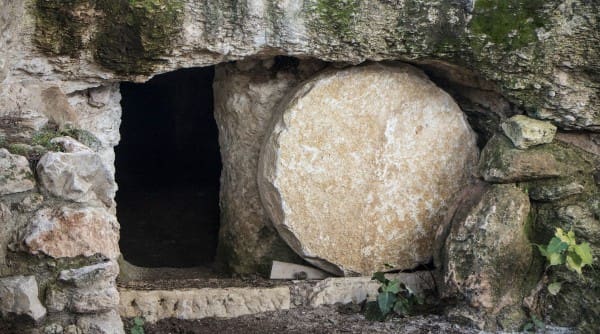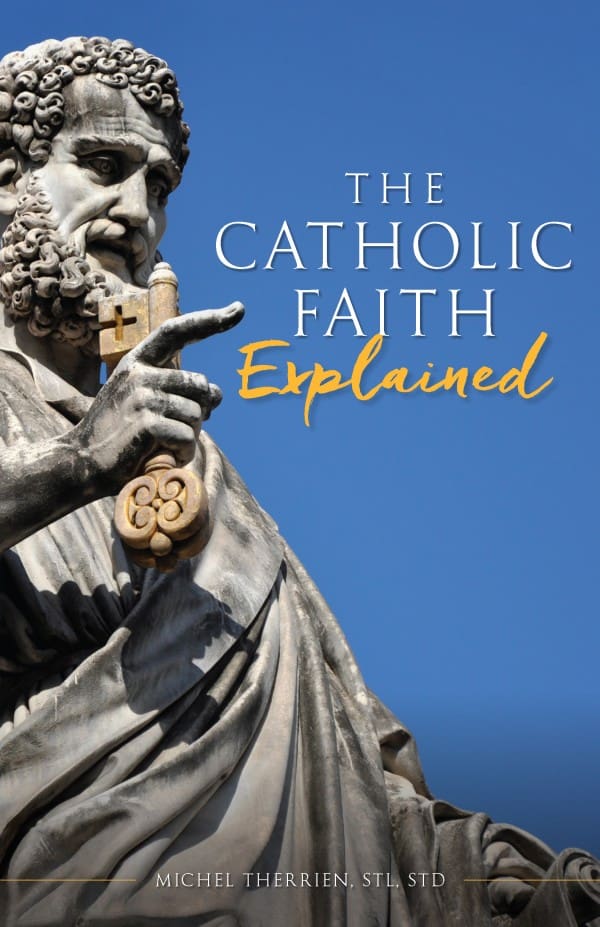Besides the belief that God became man in the person of Jesus Christ, the single most important truth professed by Christians is that the Son of God suffered torture and execution, died on a cross, and rose from the dead three days later. The claim is that Jesus did not return to his former earthly existence but was raised to a state of glorification. This glorified state was unveiled briefly on top of Mount Tabor when Jesus was transfigured before Peter, James, and John. As Peter himself testified, “For we did not follow cleverly devised myths when we made known to you the power and coming of our Lord Jesus Christ, but we were eyewitnesses of his majesty. For when he received honor and glory from God the Father and the voice was borne to him by the Majestic Glory, ‘This is my beloved Son, with whom I am well pleased,’ we heard this voice borne from heaven, for we were with him on the holy mountain” (2 Peter 1:16–18; for the story of the Transfiguration, see Luke 9:28–36).
What Christians call the Paschal Mystery stands at the center of the Christian proclamation of faith. The Paschal Mystery encompasses the essential belief of Jesus’ disciples — that Christ conquered death and gained for us everlasting life in Heaven. Jesus entered into the experience of human suffering and death in order to destroy the power of death over human life. He did not eliminate death, but made of it a path to eternal union with God. In the beginning, God created humankind for everlasting life. This is symbolized by the Tree of Life at the center of the Garden of Eden (Gen. 2:9). Unfortunately, the first sin separated us from God’s love — as we have seen already — and brought the realities of suffering and death into the human experience. In a beautiful summary, the Catechism states,
The Paschal mystery has two aspects: by his death, Christ liberates us from sin; by his Resurrection, he opens for us the way to a new life. This new life is above all justification that reinstates us in God’s grace, “so that as Christ was raised from the dead by the glory of the Father, we too might walk in newness of life.” Justification consists in both victory over the death caused by sin and a new participation in grace. It brings about filial adoption so that men become Christ’s brethren, as Jesus himself called his disciples after his Resurrection: “Go and tell my brethren.” We are brethren not by nature, but by the gift of grace, because that adoptive filiation gains us a real share in the life of the only Son, which was fully revealed in his Resurrection. (654)
What I wish to consider in this last chapter is why the Paschal Mystery is so central to the Christian Faith. I will do this by relying much on certain key (and at times long) passages of the New Testament. The point is not to prove that Jesus rose from the dead, but to explain why Jesus’ death and resurrection are so important to the Christian Faith. As if everything we have discussed thus far were not enough, the resurrection is the reason why Christians refer to faith in Jesus Christ as “good news.” Christianity is not just a code of ethics or a practice of life. We believe that in Christ, God has enacted a complete transformation of the human condition.
Shifting the Paradigm
One of the challenges of grasping the significance of the Christian Faith today is that Christians have tended to rely too heavily upon a framework of law for explaining sin and redemption. While not erroneous, our focus on justice, debt, and the need for atonement for sin can, for modern people, obscure the deepest mystery of Christianity. One of the Church Fathers, St. Irenaeus of Lyons, used the term recapitulation to describe what Christ accomplished for us. The Incarnation of the Word and the Paschal Mystery of God’s Son do not serve as some divine form of vindication, as though God needs retribution. Rather, God’s plan entailed a project of restoration and re-creation, whereby the Father has given the human race a new opportunity to enter into the eternal life of the Trinity — what today we might call a new lease on life.
Because of human freedom, as I have explained, salvation did not happen in some magical way, or even by a simple declaration. God chose to create the conditions for the possibility of a free response of love to his invitation of love. This is how love works. He decided to renew human nature and empower it once more with the capacity for eating from the Tree of Life; that is, he desired that we be properly disposed once more to attain the grace of everlasting life in Heaven. Only God himself is capable of doing this for us. Without God’s help, we remain trapped in our sinful and fallen human condition.
Another way to state this is to say that God wished to redeem humanity from within the reality of the human condition, rather than to force a solution upon us. With faith, we can perceive a profound dignity in God’s approach, which far exceeds what today we might call an “enabling” approach. The Letter to the Hebrews explains the point in these words:
Since therefore the children share in flesh and blood, he himself likewise partook of the same nature, that through death he might destroy him who has the power of death, that is, the devil, and deliver all those who through fear of death were subject to lifelong bondage. For surely it is not angels that he is concerned but he with the descendants of Abraham. Therefore, he had to be made like his brethren in every respect, so that he might become a merciful and faithful high priest in the service of God, to make expiation for the sins of the people. For because he himself has suffered and been tempted, he is able to help those who are tempted. (2:14–18)
The consequence of sin is a form of bondage to the fear of death and a curse that establishes a habitual pattern of sin that leaves us perpetually separated from God’s love. This is the curse of Adam — the curse of Original Sin.
In bearing the curse of Adam’s death and going before us in faith into death, Jesus has given suffering and death a new significance. By means of his complete obedience to his Father, he opened up for us a path to eternal life with God, through the obedience of faith, which we lost in the Fall. He attained for fallen human nature a way to what Scripture calls glory. Glory is the blessed existence of the saints in Heaven, who now enjoy a perfect and complete union with God. Jesus conquered sin by conquering the fear of death and giving us hope that God will give to us himself and eternal life beyond sin and death. Jesus provided a way to replace our wounded and cursed humanity with his own.
+
This article is adapted from a chapter in The Catholic Faith Explained by Michel Therrien which is available from Sophia Institute Press.
Art for this post on Resurrection: Cover and featured image used with permission.






